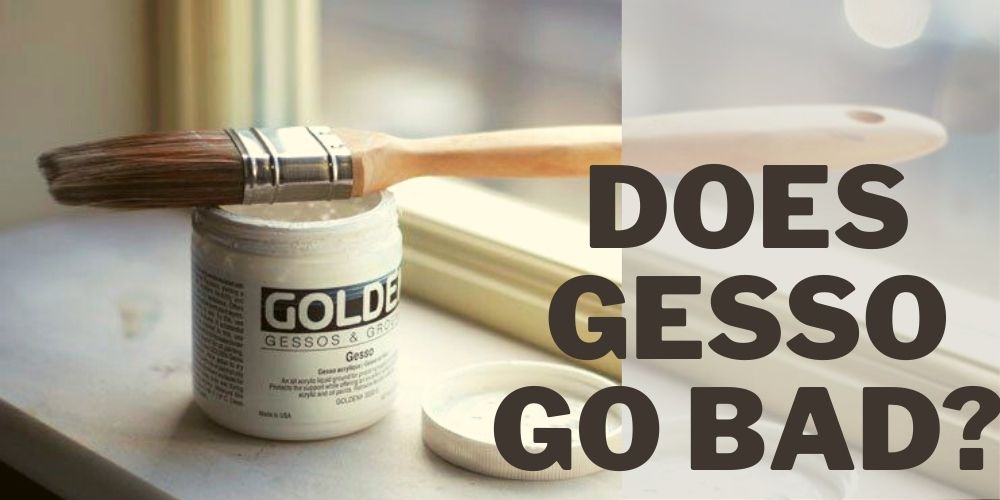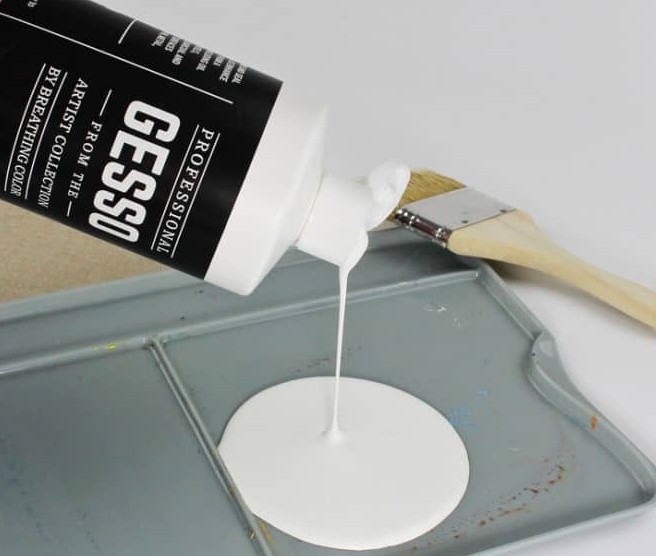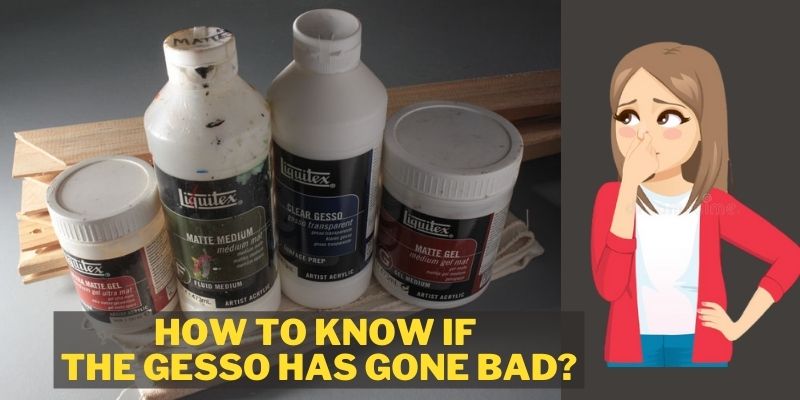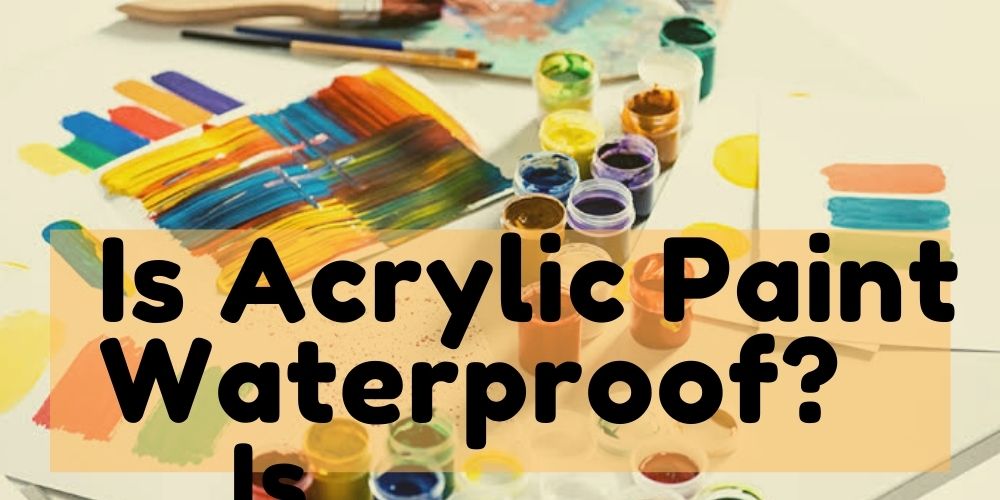Acrylic Gesso is the first to be used on canvas or other supports of painting. This is how Gesso prepares the (“prime”) painting surface. It dries, making your support more rigid, slightly textured and ready for acrylic painting. The paint would sink into the canvas without gesso.
But, does gesso go bad?
The short answer is no. Gesso does not go bad. But if you purchase it in bulk and open the seal of the bucket, then use it in small amounts and keep it aside. It may became a waste with time. In fact, if you don’t use it frequently then you may find a greenish crud around the top and a foul smell. It suggests that your gesso has gone bad.
If you keep it open for long it might grow mold over the gesso. But if you put a plastic seal over it after use then it won’t go bad. If you don’t clean the jar rims after use with a wet cloth, then it will be stuck like a gorilla glue which will allow the air or moisture to insert in the gesso container. You can use a plastic wrap in between the lid to make the container more sealed and air tight.

Applying at least two coats of Gesso to any surface is recommended, but especially when painting on canvas or linen. The first coat will permeate the support, lowering the chances of paint delamination. The second coat adheres to the first and starts to smooth out the surface.
What is Gesso?
Gesso is an essential art supply that is widely used by painters to make their canvas ready for painting. Acrylic gesso serves to protect raw canvas from the deteriorating effects of oil paints while also providing a smooth and resilient surface for oils and acrylics to perform at their best.
Although most acrylic gesso is similar to white acrylic paint in consistency and opacity, it comes in a wide range of thicknesses and opacities. Although gesso is traditionally white, it is now also available in black, clear gesso, and colored gesso.

You can also dye your gesso to achieve any desired color. Simply add a few drops of acrylic paint to the gesso and you’ve got colored gesso.
1 pint of gesso covers approximately 12.5 to 37.5 square feet. It is recommended to mix 2 tablespoons of primer with 1 tablespoon of thinner for every 18×24″ canvas meant for Oil Priming White (3 square feet).
The consistency and texture of gesso varies based on the brand. Some are thinner and more viscous liquid, while others are thicker. Some go on more smoothly, while others leave a textured finish. You’ll have to try a few different brands to figure out which one you prefer.
Why does Gesso go Bad?
If you don’t store gesso in the proper manner then it can cause growing bacteria or mold. When you don’t close the lid properly and oxygen gets in, it will dry out.
If you mix up a cup of gesso with tap water in a palette at the time of use and dump the leftover into the jar. It can mess up the gesso.
If you wash your paint brush with regular tap water after use and don’t dry the brush properly at the time of next usage. The water particles present in the brush bristles can blend with gesso and can worsen the gesso.
Just close the lid or keep the gesso in an air-tight container after use. When you won’t use the gesso for years it may develop a foul smell and you can see mold growth then it might have gone bad.
In the case of homemade gesso a particular ratio of water and glue and chalk powder should be maintained. If the ratio hampers the gesso can go bad.
Normally a gesso is generally made with a filler, a binder and the main white pigment. Usually Titanium Oxide is used as the white pigment. Gesso is generally thinner or like a little bit of absorbent paint.
Sometimes the acrylic polymer or medium is mixed with gesso at the time of application. If the medium is heavier than the actual gesso. It can escalate the worsening process of gesso.
Can Gesso Grow Mold?
Gesso can encourage the growth of mold and bacteria due to the air conditioning of its storage space. If the gesso is stored in a warm humid condition there is a fair chance that it has grown mold. Bacteria thrive in moist, warm environments, so it’s critical to avoid cross-contamination.
Another reason for that is if the gesso comes in direct contact with tap water. It can happen in many ways, for example if you dip the wet brushes into the container or if you try to store the leftover gesso in its original container. In fact, don’t even put any paint brush or other art tools into the container.

So you must use dry brushes and dispose of the leftover gesso properly in order to avoid growing mold inside it. Another thing that you may try is to use a good quality dehumidifier to control the air conditioning and moisture of the room.
If you don’t like air tightening your container you may try using desiccant as it also absorbs the moisture pretty well. In fact, it’s a budget friendly option as well.
Even after taking all the precautions your gesso grows mould, then you don’t need to worry much. You just need to remove the molded part, and use the unaffected part without any hassle.
However, if you’re into a professional level of work, then you should scrap the molded gesso, and buy a fresh one.
[Pro Tip: In most cases tap water remains contaminated due to the presence of several kinds of bacteria. That’s why the water becomes septic and also smells bad. You can use a little amount of bleach to kill the bacteria and solve the issue.]
Does Gesso Expire?
Gesso does not expire or go bad until you store it poorly. Normally a gesso container can survive for a distinct amount of years. In most cases it has been noticed that you can use the gesso container for around 15 to 20 years if you have taken good care of the gesso paint.
The consistency of the acrylic polymer medium and the paint is not always the same. The gesso is much heavier than the consistency of the medium. The paint can get separated if you leave it unsupervised for a long period of time.
But it doesn’t imply that your gesso has gone bad or you need to discard it. Just scrap out the upper thick layer and you will get your original gesso paint as intact as it was before.
Make sure to mix it with a proper medium and stir it properly before use. The more precautions you will take to save the gesso the long it will last.
How to know if the gesso has gone bad?
Your gesso does not smell badly normally. The paint was probably adulterated if you find a terrible smell after opening the lid of the container. The smell may come from molds or other bacteria that have entered the gesso.

Some people have reported it smells like a rotten egg. So if you find any foul smell from the container of gesso, it might be contaminated. You may see a greenish crud on the top layer as well.
What Precautions to be taken to save the gesso?
To save your gesso from getting contaminated you need to follow certain things:
Frequently Asked Questions
Get your answers here
1. Why Does Gesso Smell Bad?
Generally gesso smells like ammonia and it is normal. When you see any greenish crud on the top layer of the gesso container, it might have developed bacteria in it. It can leave a rancid smell like rotten eggs.
2. What can I substitute for gesso?
Commercial acrylic medium, rabbit skin glue or clear gesso can be the best substitutes for gesso. If you work with acrylics, you can paint directly on a surface without any pre-production, or you can make gesso easily at home with ingredients which can be bought almost anywhere if a cheap alternative to gesso is needed.
Final thoughts
When you are a professional and want to purchase art supplies in bulk, you should be conscious whether the products will go bad over time. If you are buying gesso in bulk and store it properly, it won’t go bad.
But remember to close the lid tightly after use and to avoid greenish mold growth, never dip your paint brush into it. Always use distilled or fresh water for your painting tools cleaning purposes.



